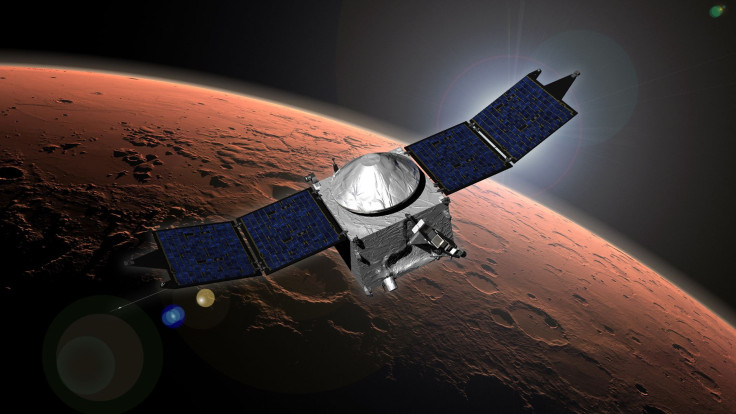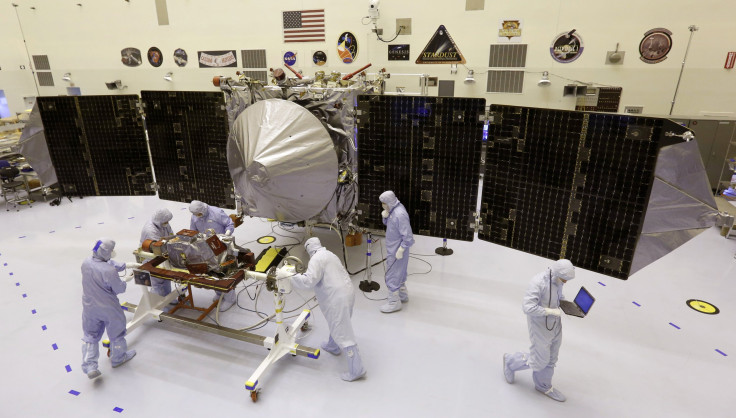NASA MAVEN To Explore What Happened To Water On Mars; Year-Long Mission Underway

When NASA’s MAVEN space probe entered Martian orbit Sunday evening, it completed the first step of a mission that, if successful, could help scientists understand exactly how much water once flowed on the red planet. The spacecraft won’t touch Mars’ surface. Rather, it will use its vantage point to make sense of what happened to the liquid believed to have flowed freely there billions of years ago.
The Mars Atmosphere and Volatile EvolutioN (MAVEN) spacecraft will, in the course of one Earth year, measure Mars’ upper atmosphere, including an examination of how gases escape from Mars’ atmosphere and into space. While MAVEN will also study Mars’ interactions with the sun, solar winds and the planet’s structure, scientists hope the atmospheric measurements give Earthlings a better glimpse into how the dried river beds throughout Mars were formed.
Any discoveries will build on previous findings from NASA’s Mars rover Curiosity, which in December 2013 found evidence of a large freshwater lake that may have been hospitable to life. The lake, which existed 3.5 billion years ago, is remarkably similar to like bodies on Earth, with scientists suggesting microbes from Earth could have conceivably survived.
“The environment would have existed long enough that they could have been sustained, prospered, grown, multiplied,” John P. Grotzinger, a professor of Geology at the California Institute of Technology and the project scientist for the Curiosity mission, told the New York Times. “Potentially the aqueous stream, lake, groundwater system could have existed for millions to tens of millions of years. You could easily get a lake with the area of the Finger Lakes in upstate New York.”

Mars is currently a barren landscape with a temperature that varies from 70 degrees Fahrenheit to minus 225 degrees. It, along with the rest of the solar system’s major planets, formed as a collection of small particles. Mars was initially a warm place hospitable to life, though it began cooling 3.5 billion years ago.
Scientists suggest microbial life flourished for a time, and hope Mars’ atmosphere holds clues about how the planet went from warm and wet to dry and cold. This is where MAVEN comes in, with NASA sending the probe on a mission to determine whether water from ancient Mars dissolved into space or seeped into the planet’s interior and froze.
“As the first orbiter dedicated to studying Mars’ upper atmosphere, MAVEN will greatly improve our understanding of the history of the Martian atmosphere, how the climate has changed over time, and how that has influenced the evolution of the surface and potential habitability of the planet,” NASA administrator Charles Bolden said in a statement Sunday. “It will also inform a future mission to send humans to the red planet in the 2030s.”
Those long term plans, laid out by President Obama in 2010, are running right on course. The space agency announced last month it has completed the design for a launch rocket designed to carry humans to Mars and will begin developing the spacecraft, with a test launch slated for 2018. Before a crew of Americans lands on the red planet in 20 years or so, though, MAVEN will help determine what that crew should expect.
MAVEN arrives alongside other NASA orbiters, two NASA rovers and a European orbiter currently studying Mars. A seventh probe, owned by India, is expected to arrive Wednesday.
© Copyright IBTimes 2024. All rights reserved.





















